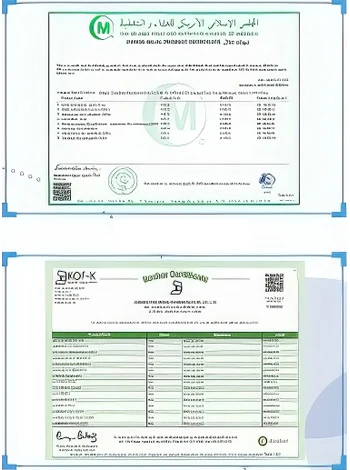



Production Process of Calcium Ammonium Nitrate Fertilizer for Agricultural Use
The Manufacturing of Calcium Ammonium Nitrate
Calcium ammonium nitrate (CAN) is a widely used fertilizing agent in agriculture, known for its effectiveness in providing essential nutrients to crops. The process of manufacturing CAN involves a series of chemical reactions and careful handling of materials to ensure the final product meets agricultural standards for quality and efficacy.
At the core of CAN production lies the combination of calcium carbonate or calcium oxide, ammonia, and nitric acid. The first step typically involves the reaction of ammonia with nitric acid to produce ammonium nitrate. This reaction is exothermic, releasing heat and necessitating careful temperature control to optimize yield and manage safety risks. The standard chemical reaction can be represented as follows
\[ \text{NH}_3 (g) + \text{HNO}_3 (aq) \rightarrow \text{NH}_4\text{NO}_3 (aq) \]
Once ammonium nitrate is synthesized, calcium is introduced into the mixture. This can be achieved by the addition of either calcium carbonate or calcium oxide. The choice between these two calcium sources often depends on economic factors and the availability of raw materials. The chemical reaction for combining ammonium nitrate with calcium carbonate can be represented as
\[ \text{CaCO}_3 (s) + 2 \text{NH}_4\text{NO}_3 (aq) \rightarrow \text{Ca(NO}_3\text{)}_2 (aq) + \text{NH}_4\text{2CO}_3 (aq) \]
manufacturing of calcium ammonium nitrate

The result of this reaction forms calcium nitrate and ammonium carbonate. Following this, ammonium carbonate is often decomposed into ammonia, carbon dioxide, and water, which can further integrate into the CAN production process or be utilized in other applications.
The result of these reactions is a mixture of calcium nitrate and ammonium nitrate, which when crystallized and granulated yields calcium ammonium nitrate
. The granulation process is crucial, as it not only ensures the proper physical properties of the product, such as size and density, but also enhances its ease of handling and application in the field.After granulation, the product undergoes rigorous quality control testing. This includes assessments of nutrient content, particle size distribution, and moisture levels. The goal is to ensure that CAN conforms to the required agricultural specifications, providing balanced nutrients for optimized crop growth. Typically, CAN contains about 27% nitrogen (in the forms of ammonium and nitrate) and about 6% calcium, making it a versatile choice for farmers looking to enhance soil fertility and crop yields.
Environmental considerations are also paramount in the manufacturing process. The industry is increasingly focused on reducing its carbon footprint and ensuring that production methods are sustainable. This includes optimizing energy use during production, recycling by-products, and managing waste effectively. Innovations such as using renewable energy sources and alternative sustainable materials for fertilizer production are gaining traction.
In conclusion, the manufacturing of calcium ammonium nitrate is a complex process that integrates several chemical reactions and rigorous quality controls. It's a critical component in modern agriculture, providing essential nutrients to plants, enhancing crop yields, and ensuring food security. As the agriculture sector continues to evolve, the industry will likely see advancements aimed at improving the efficiency and sustainability of CAN production, ultimately benefiting both farmers and the environment. With ongoing research and development, the future of CAN manufacturing holds promise for even more sustainable practices to support the growing global population's food needs.
-
Why Sodium Persulfate Is Everywhere NowNewsJul.07,2025
-
Why Polyacrylamide Is in High DemandNewsJul.07,2025
-
Understanding Paint Chemicals and Their ApplicationsNewsJul.07,2025
-
Smart Use Of Mining ChemicalsNewsJul.07,2025
-
Practical Uses of Potassium MonopersulfateNewsJul.07,2025
-
Agrochemicals In Real FarmingNewsJul.07,2025
-
Sodium Chlorite Hot UsesNewsJul.01,2025










